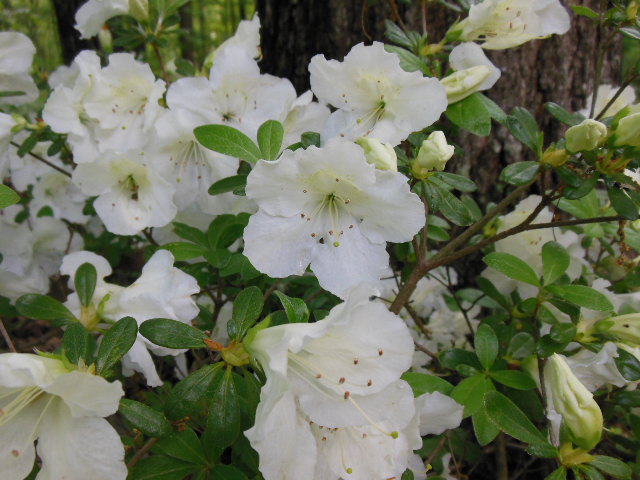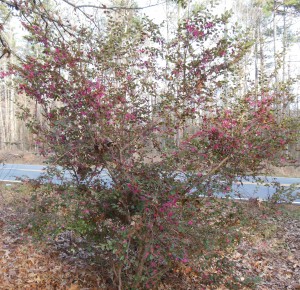I received this very special plant as a gift from my Mother-in-law. She is so thoughtful, and kind, and generous. She had this beautiful plant delivered to me, in memory of my Dad. He passed away at the age of 92, in early Nov. 2018. I could go on about him for hours. He was a teacher, a pilot, a gardener, a WWII Navy veteran, a great father, and a person of the highest possible honor and integrity. He loved gardening, growing vegetables, and canning and preserving them. And, he was really knowledgeable and skilled at it all.

The History of the Camellia is a very old, and quite magical story. I found a great wealth of information at the American society for Camellias website. They are located in Fort Valley, Georgia.
Camellias like dappled shade, but will tolerate some sun. They hate wet feet. Plant them high, and keep them away from areas that are too wet.
This Camellia named October Magic ‘Orchid’ is from a collection by Southern Living. This camellia is a Camellia Sasanqua, in contrast to a Camellia Japonica. Japonicas are larger plants, with larger leaves, and much larger blooms. They bloom later in the winter and into the early spring. Blooming from about January- March. Sasanquas are smaller shrubs that have more profuse blooming, but not as large blooms. They also bloom earlier in the season-from say October to January.
Wow, what an amazing plant. My new favorite, and it will always remind of my Father, and of my Mother-in-law, and the love of family.
I found a bit of folklore from Japan regarding the Camellia. It is said the spirits, and Gods come down from heaven to make their earthly home inside the camellia blossoms, when they visit those on earth. I hope that Dad and Mom will have many Camellia blossoms to choose from should they ever come to visit me. Their spirit lives on also in my love for gardening, vegetables, and all the astounding gifts nature provides.

















